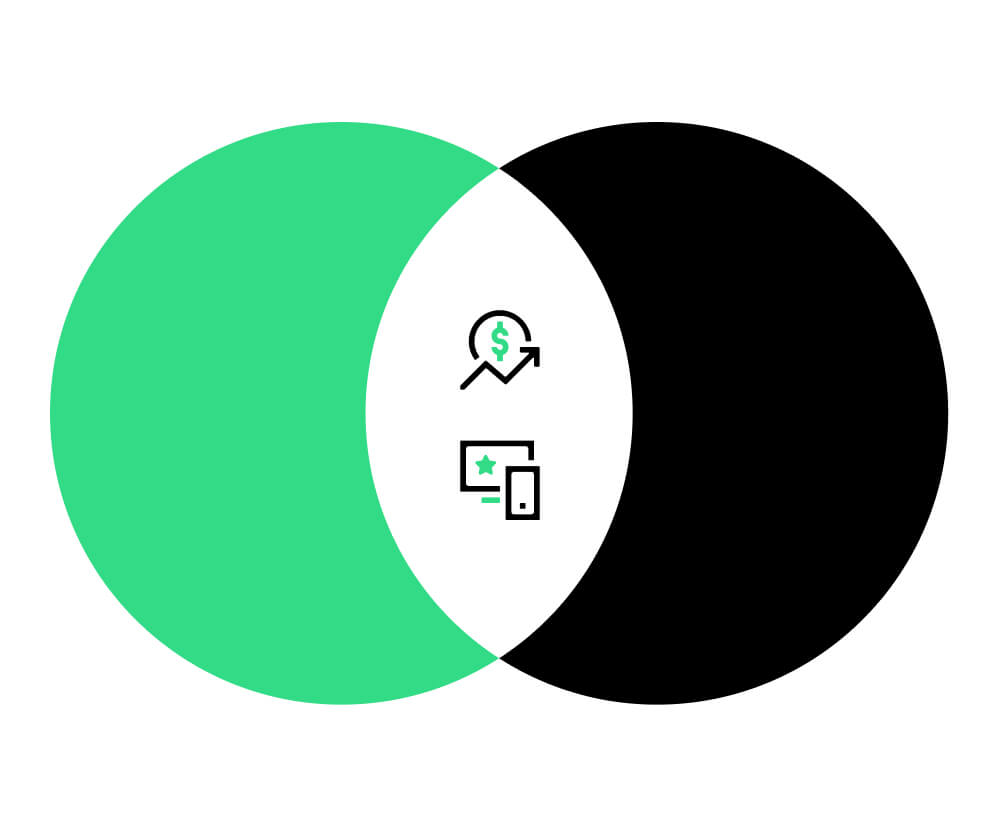In the fast-paced world of marketing, figuring out the true impact of advertising investments isn’t just fundamental – it’s non-negotiable. Return on ad spend (ROAS) isn’t just a metric; it’s a beacon, illuminating a path through a labyrinth of campaigns and initiatives, ensuring that every pound invested delivers maximum impact.
But in today’s dynamic environment, unlocking the full potential of ROAS measurement demands more than just a cursory glance at numbers – it requires a strategic approach to shift from a shallow understanding to a deeper look into metrics that drive ROAS optimisation. That’s where data collaboration comes in. Data collaboration is a powerful measurement tool marketers need as they wrestle with escalating challenges in reaching their target audiences, including increasing opt-outs and signal loss.
What is data collaboration?
Data collaboration uses technology to combine and analyse data sets from various sources. It unlocks combined insights that can be used to run analytics, build targeted campaigns, and even optimise media strategy in the middle of a campaign. More and more companies, such as Pinterest, are looking to data collaboration to optimise their advertising investments.
Data collaboration unlocks a vast amount of capabilities, from securely and privately reconciling your first-party data with a publisher’s and reaching audiences to learning whether a television ad campaign has driven incremental site traffic and sales. As most marketers know, TV can be a difficult channel to measure – and connecting TV ad viewers to buyer actions across other channels is impossible without a powerful analytics solution. With data collaboration (and help from LiveRamp), you will be able to access holistic performance data across your media portfolio and pinpoint the incremental value of the new advertising to inform your ad strategy going forward.
That’s just one example of how data collaboration can help optimise ROAS. Now let’s take a closer look at specific components of measuring ROAS and the transformative role data collaboration can play in improving media strategies:
- Cost per acquisition (CPA): At the heart of ROAS lies the cost-effectiveness of acquiring customers. Understanding CPA allows us to gauge how efficiently our advertising spend is translating into new leads or customers. By collaborating with data partners to access comprehensive customer acquisition data, we can refine our CPA calculations and ensure that our investments deliver maximum returns.
- Customer lifetime value (CLV): ROAS extends far beyond the initial transaction – it encompasses the entire customer journey. CLV provides valuable insights into the long-term profitability of our marketing efforts. Through data collaboration with customer insights teams and industry peers, we can access enriched customer data and gain a deeper understanding of CLV, enabling us to prioritise strategies that foster loyalty and lasting customer relationships.
- Return on investment (ROI): While ROAS focuses on revenue generated from ad spend, ROI offers a broader perspective by considering overall investment returns. By collaborating with finance and analytics teams to integrate marketing and financial data, we can analyse ROI alongside ROAS, gaining a comprehensive view of our marketing performance and optimising resource allocation accordingly.
- Cross-screen measurement: When calculating ROAS, cross-screen measurement is critical in today’s multi-device world. Collaborating with data partners specialising in cross-device tracking enables marketers to seamlessly integrate data from various screens and channels to achieve a complete ROAS analysis. Data collaboration gives marketers a holistic view of campaign performance, allowing for more accurate optimisation of ad spend across different devices and platforms.
In addition to these foundational metrics, advanced techniques such as incrementality testing and attribution modelling play a critical role in ROAS optimisation. Working with data collaboration experts, rigorous incrementality tests can measure the impact of advertising efforts accurately. On top of that, marketers can deploy sophisticated models to attribute revenue effectively across various touch points, providing a holistic view of campaign performance.
Going beyond ROAS with data collaboration
In today’s interconnected world, data collaboration is imperative and the catalyst for unlocking the full potential of a marketer’s media strategy by delivering a unique look inside campaign performance. And yet, that’s only one reason marketers should be experimenting with data collaboration.
Data collaboration can unlock a world of opportunities for companies looking to build enduring brand and business value. Through data collaboration, brands can securely share first-party customer data with one another and unlock rich, new insights. Retailers can create new, connected experiences for their customers. Publishers can improve yields and enhance communication with consumers. Platforms can seamlessly stitch together better customer experiences.
By harnessing the power of data collaboration to access enriched data, advanced analytics, and diverse perspectives, modern marketers can unlock insights that drive innovation and maximise the impact of advertising investments.
LiveRamp is here to help build your data collaboration strategy. Learn more about the comprehensive data collaboration platform being used by the world’s most innovative companies.
This blog was originally published on Jessica’s Shapiro’s LinkedIn. Follow her for more CMO insights.
